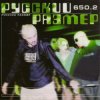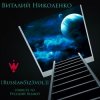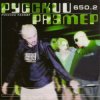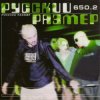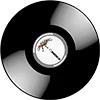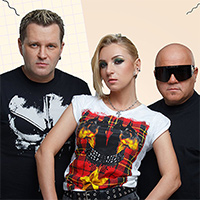
“Russkiy Razmer” — a cult Russian band performing music in the styles of eurodance, electro-pop, techno and rave. Founded in the early 1990s in Saint Petersburg, the project became one of the key symbols of Russian club culture. Their signature sound — powerful synthesizers, emotional melodies and live vocals — earned them millions of devoted listeners.
Formation and Early Years
Russkiy Razmer was founded in 1991 by friends Dmitry Kopotilov and Viktor Bondaryuk, who had previously played in rock bands in Kazakhstan. After moving to Leningrad, they decided to focus on electronic music. The name symbolized their ambitious vision and belief that the Russian dance scene could stand alongside the Western one.
Inspired by European leaders such as 2 Unlimited, Snap!, Culture Beat, Technotronic, they sought to add a distinct national tone. Their early tracks quickly spread through Saint Petersburg’s clubs, and soon Russkiy Razmer were recognized as pioneers of Russian eurodance.
Breakthrough and Success
The debut album “Yu-A-Yu” (1994) marked the beginning of their success. Their next release, “La-La-Fa” (1995), created together with Professor Lebedinsky, brought national fame. Dance hits, witty lyrics and an instantly recognizable sound made the album a sensation, with tracks dominating radio airplay across the country.
By the late 1990s, the band solidified their status with a string of popular albums:
- “Davai! Davai!” (1996) — high-energy eurodance with signature humor;
- “Tantsuem?” (1998) — a blend of pop techno and live instruments;
- “650” (1999) — a cult release featuring the hit “Angel Dnya”, one of the defining songs of late-’90s Russian dance music.
By the end of the decade, Russkiy Razmer had become a fixture on MTV Russia and Muz-TV, with their tracks entering the golden era of Russian dance music.
Band Members and Evolution
Over the years, the band underwent several lineup changes while maintaining its signature sound. Past members include vocalists Anzhelika Kuznetsova and Eleonora Filimonova, keyboardist Dmitry Khil, and guitarist Alexander Tyurin. After Viktor Bondaryuk’s departure in the 2000s, Igor Lutsenko joined Dmitry Kopotilov as vocalist and producer, marking a new chapter for the project.
Later members included Alexander Tolzak (sound, production) and Andrey Saveliev (arrangements). In 2022, vocalist Elena Yefryomova joined the band, adding a fresh voice and stage presence.
Split and “Razmer Project”
In the early 2000s, Viktor Bondaryuk left to form his own project, “Razmer Project”, continuing in the dance-pop genre. The original Russkiy Razmer, led by Dmitry Kopotilov, retained the name, style, and repertoire, officially continuing the brand. Despite the split, both projects carried on contributing to Russian electronic music, maintaining mutual respect.
Modern Era
Throughout the 2010s, Russkiy Razmer toured extensively, performing at major retro festivals such as Disco of the 90s, Legends of Retro FM, Nashestvie, and the Record Dance Awards. The band continued to refresh its live sets and release new versions of classic hits.
Between 2022 and 2024, the band embarked on a large-scale tour across Russia — Saint Petersburg, Tula, Saratov, Cheboksary, Irkutsk, and more. In 2023, they announced work on a new album, “Out”, scheduled for release in 2025. They also launched a remix contest for their song “Plastinki” on the official website, inviting young producers to participate — proof of their openness to new creative collaborations.
Musical Style and Legacy
The sound of Russkiy Razmer is a fusion of classic eurodance, pop techno, and Russian melodic sensibility. Their songs are built around simple yet memorable hooks, heartfelt vocals, and infectious rhythm. Their influence on Russian club culture is enormous, inspiring acts like Hi-Fi, Reflex, Demo, and Virus!.
They were among the first to successfully adapt Western electronic music to the Russian language and cultural context, making dance music a mainstream genre in the country.
Interesting Facts
- The name “Russkiy Razmer” means “The Russian Way” — reflecting the group’s philosophy of bold and expansive sound.
- The album “650” sold over 500,000 copies, becoming one of the most successful eurodance releases in Russian history.
- The videos for “Angel Dnya” and “Davai!” were in heavy rotation on MTV Russia and Muz-TV in the late ’90s.
- The band was among the first in Russia to use laser shows and synchronized lighting in concerts.
- Notable collaborators include Professor Lebedinsky, DJ Groove, DJ Fonar, and DJ Lexx.
Present and Future
Today, Russkiy Razmer remains active — performing live, recording new tracks, and collaborating with modern electronic producers. The group regularly appears in TV programs, livestream festivals, and special projects on YouTube and VK Music. They stay true to their roots while embracing new sound technologies and visuals.
Russkiy Razmer is more than a band — it is a living symbol of the 1990s dance era that continues to resonate with the same energy and passion three decades later.


